How good are you at using the workforce you have to meet your clients’ demands?
To answer the question, just think of how many times your projects have run late because you didn’t have enough workers, forcing you to change the schedule at the last minute.
If you are good at workforce planning, these things won’t happen. This article will explain everything you can gain from good workforce management.
After hearing what’s in it for you, you’ll be quick to invest in workforce planning. So, let’s get right into it!
In this article...
1. Help With Recruitment Processes
Hopefully, you haven’t been in a situation where you have to start working on a project immediately but don’t have available staff, as this can lead to last-minute hiring and relying on the available candidates who are not necessarily the best fit for the job.
That’s not surprising, considering that the construction industry faces a shortage of skilled workers.
The US Chamber of Commerce reports that most contractors face issues finding quality labor.
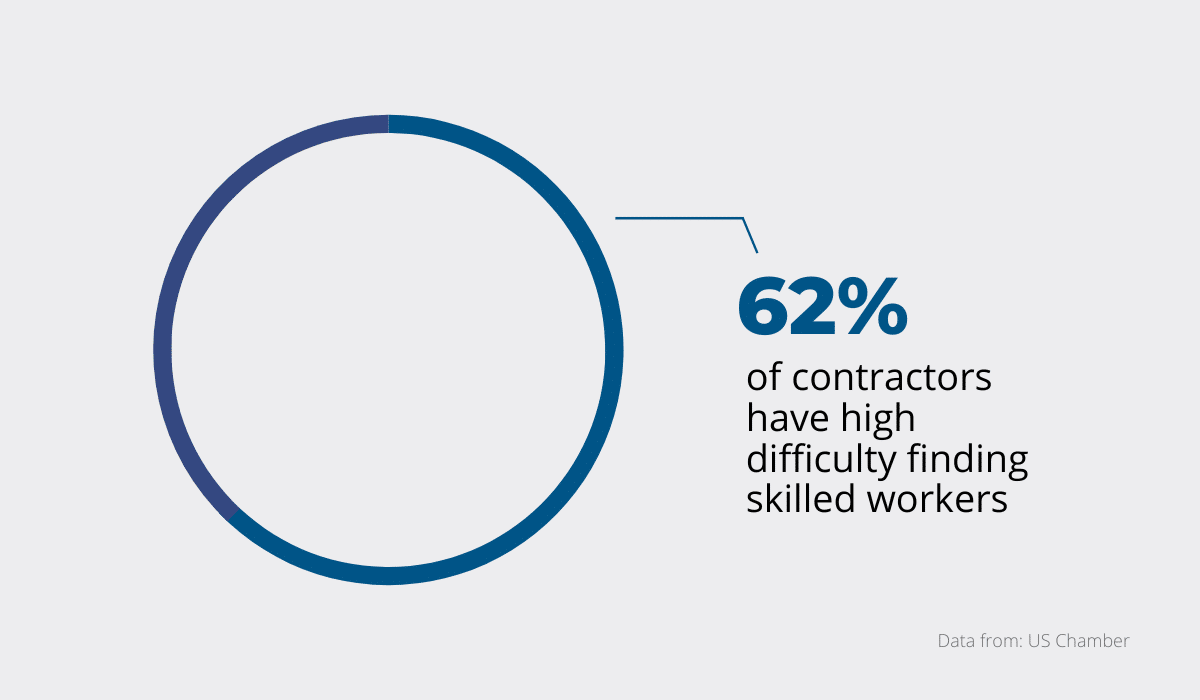
Therefore, finding someone qualified at the last minute will be a challenge. When you’re in a hurry to hire and train someone, you aren’t really in the position to pick and choose.
You’ll probably take on the best out of all the applicants, even if they don’t meet all your requirements.
Furthermore, last-minute hiring leads to shorter training periods, leaving room for error.
With good workforce planning, you will avoid all of these issues.
According to CIPD, workforce planning is “the process of balancing labor supply (skills) against the demand (numbers needed).”

In other words, you analyze your workforce in detail and do it well in advance to understand how many skilled workers you have and how many you need for ongoing and future projects.
Workforce planning focuses on the future and aims to understand how your current workforce meets the demands you’ll soon have.
Understanding this balance helps you recruit more people with the right skills on time.
Hiring people well in advance will offer many benefits and help you identify the person who is the right fit for your company.
You’ll also have time to provide the new hires with the necessary training and teach them how your company operates.
With effective workforce planning, you’ll be able to buy yourself time and wait for the right candidate to come along.
2. Reduced Expenses
Cutting corners will affect the quality of your projects, but that doesn’t mean you shouldn’t try to save where you can.
Workforce planning will help you reduce expenses without affecting work quality.
In fact, a quality hiring process will help you hire the right people for the job. Good scheduling will help you use workers for the tasks they excel at, so the overall work quality will increase.
Moreover, when you know your construction workers’ schedules, you can minimize employee downtime, which is already in the 20-30% range.
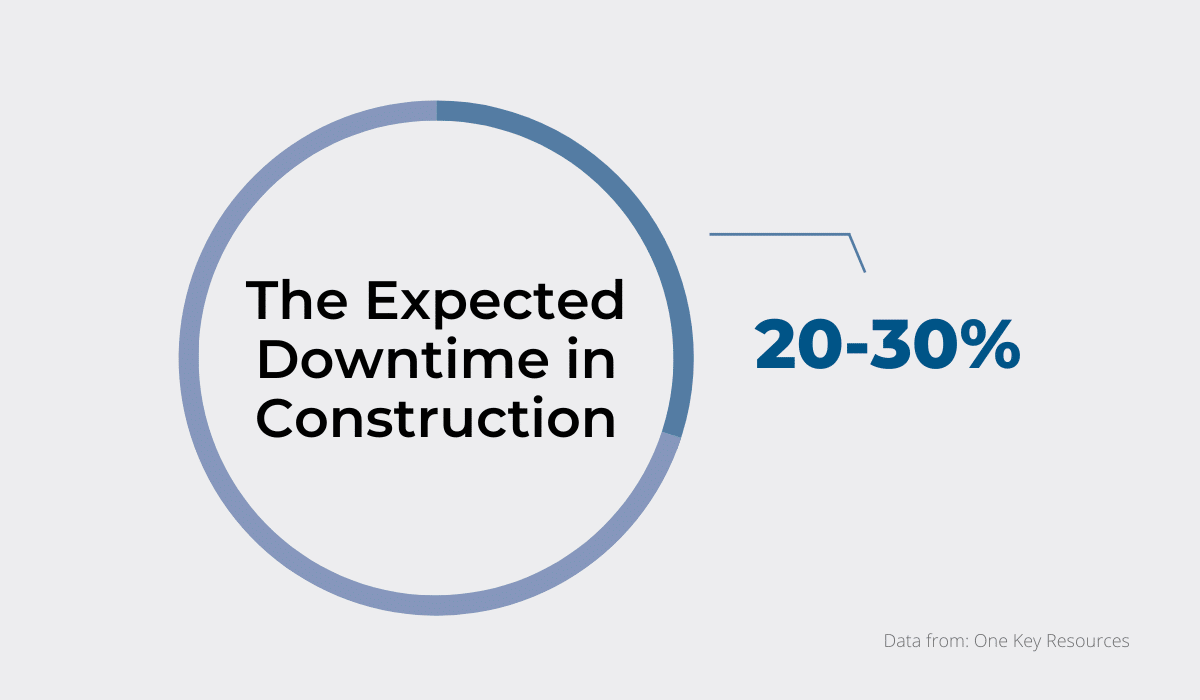
In other words, you can go into a project expecting to spend at least 20% of the time in downtime. Why risk this?
Downtime is the time your employees spend around the worksite doing nothing because they either don’t have the tools to perform their job or can’t do their tasks for the time being because of other reasons.
Naturally, this costs you money because you are essentially paying someone to do nothing.
Workforce planning gives you an overview of the team you have, the skills they possess, and their schedules.
Therefore, you’ll be able to notice when an employee has run out of tasks during work hours, allowing you to schedule other work.
If the availability of tools is an issue, it would be a great idea to look into tool and equipment tracking software like GoCodes.
With such software, you’ll always know what kind of tools and equipment you have, where it currently is, and who is using it.

These options will let you schedule the equipment in advance, thus minimizing the downtime that might occur due to a lack of tools and equipment.
In short, workforce management will help you cut costs while still producing quality work.
3. Higher Forecasting Accuracy
Project forecasting is always a tricky part of construction. You can hope things go a certain way, but unexpected problems could completely derail the project and cause costly downtime.
However, with workforce planning, you’ll be able to improve the accuracy of your forecasts regarding project capabilities.
Here’s how it will work: you will use the data you’ve compiled from already completed projects and analyze it.
The data will show you why you’ve run into delays. For instance, one of the possible reasons is a lack of skilled workers.
According to the US Chamber of Commerce’s report we quoted earlier, this is a grim reality for many, since over half of contractors doubt their workers’ skills.
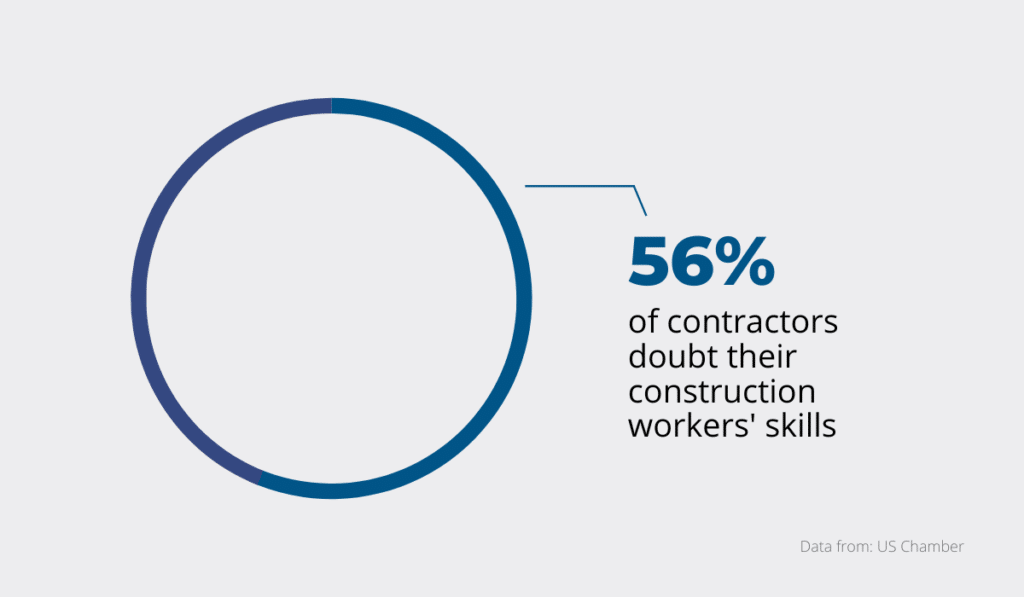
Source: GoCodes
Similarly, maybe the team was great, but the machinery didn’t work as planned. Perhaps you forgot to prepare for the unexpected.
Whatever the problem was, your analysis will point you in the right direction.
Once you know the cause of the issues, you’ll be able to act. If the problem is not enough skilled workers, you’ll determine which skills are the most wanted and hire accordingly, well before the project begins.
That way, you’ll leave enough room for onboarding and training before sending the new hire out in the field.
If the projects were delayed because of equipment, you’d use the tracking software to get reports on the current state of your construction fleet.
You’ll have to get your maintenance team’s records if you don’t use this software. Either way, you’ll understand which equipment needs to be repaired or replaced.
When you implement workforce planning, you’ll improve your forecasting significantly.
4. Optimized Workforce Management
One of the most important benefits of workforce planning to you as an employer is knowing your workforce is optimized.
In other words, you’ll have enough employees for the job, and none of them will be over or underworked.
For example, safety is a particularly major concern in the construction industry.
OSHA reports that a fifth of all worker deaths happen in construction, which means your employees are at a greater risk than workers in other professions.
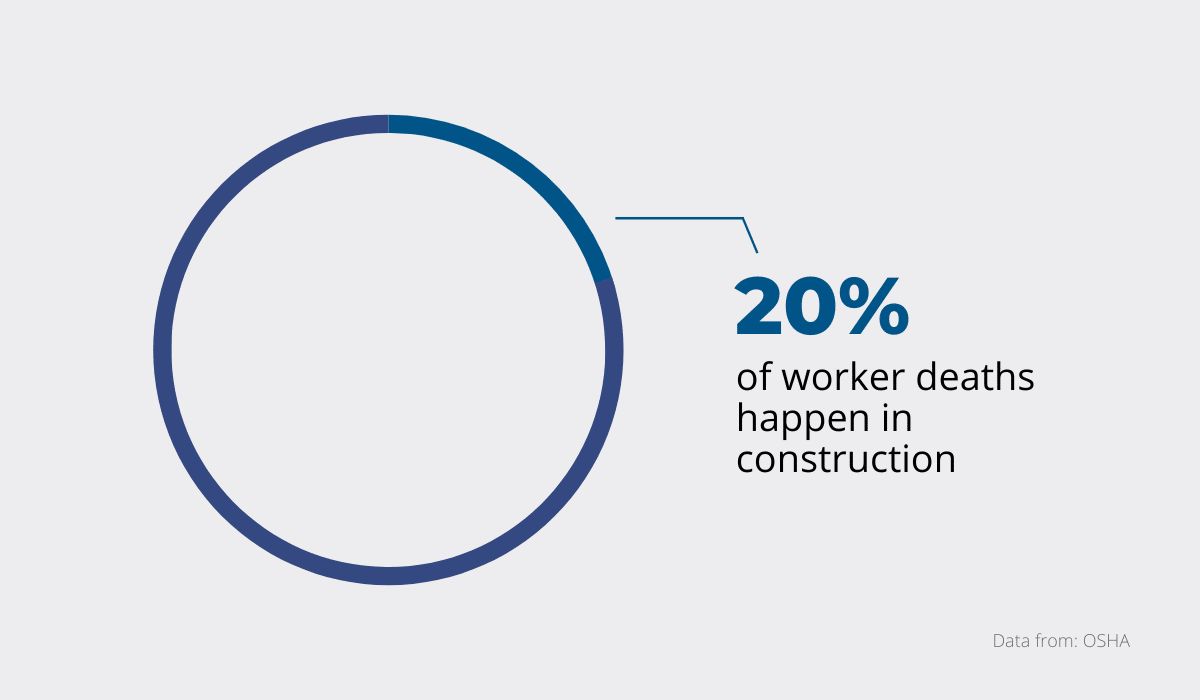
Exhaustion caused by long hours and insufficient breaks causes a lack of focus, leading to workplace accidents and injuries.
If you overwork your employees constantly, you risk them taking more time off to recover, causing an accident, or getting injured.
Workforce management will help you determine just how many employees you need and if you are giving some more work than necessary. If so, it’s time to hire more people!
Of course, this strategy works for the other costly scenario in which you have too many workers who spend most of their time idle because there is no work for them.
In such cases, cuts might be necessary as you are wasting money on having more employees than necessary.
Either way, workforce planning helps you optimize your employee scheduling and assign everyone the same amount of tasks.
5. Simplified Project Scheduling
Laborchart defines project scheduling as “assigning the right people to the right jobs at
the right time,” which means workforce planning can be of use.
After all, you use workforce planning to ensure the worker skilled for the task in question is working on it exactly when needed.
Only then will you be sure your projects won’t run into delays.
However, the US Chamber of Commerce also found that two-thirds of contractors expect delays on at least one of their projects.
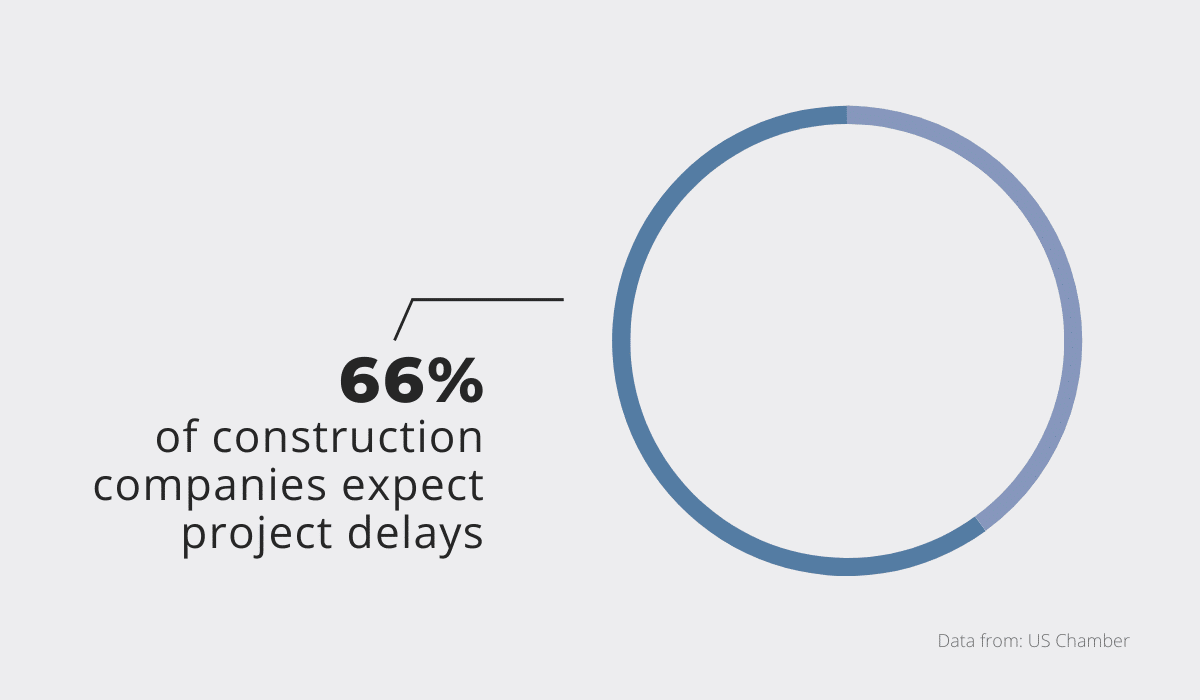
If you think about it for a while, you’ll realize just how troubling that statement is.
It means that many construction projects will not be completed on time and will cost much more than expected.
As a construction company, you can only afford so many delays before you become unprofitable and seen as unreliable.
However, with a good workforce planning strategy, you’ll be able to minimize or altogether avoid delays.
This process entails analyzing everything about the workforce and demands, including scheduling.
You can plan for specific stages of the construction project to be finished at a particular time, but the planning is useless if you don’t have the people who will work on them.
With a good strategy, you’ll be able to plan better and create a more realistic schedule.
In short, you’ll consider even the possible shortage of workers and not promise something you can’t deliver.
6. Stronger Employee Retention
When discussing workforce planning, it’s crucial to stress just how important it is for employee retention.
Happy employees are less likely to leave your company. Someone who is overworked might take the first opportunity to get out of there and work somewhere less stressful.
Sadly, the US Chamber of Commerce found that most construction companies give more work to skilled workers.

Therefore, because they put in more hours and effort than their unskilled counterparts, such workers are probably overworked.
A difference in workloads can easily lead to feelings of unfair treatment, which could result in workers quitting.
And turnover is the HR department’s biggest problem, as 47% report, followed by recruitment at 36%.
Therefore, you shouldn’t risk losing your good workers and trying to find someone just as good. You might not find them, leading to your current workers being overworked.
Workforce planning will help you spot issues with your scheduling, such as giving employees more work than they can handle or having some employees constantly working while others stand around idly.
It will be easy to spot if some expert workers get sent around different construction sites because their expertise is needed, which could signify that you need to hire more people for that position.
With a fair division of labor and less stressful schedules, you’ll offer better working conditions for your team.
Anyone working on your construction site will rest assured they will not get more work than they can handle and won’t be worked to exhaustion.
Therefore, you’ll retain a lot more employees than before.
Good schedules and fair distribution of work will help you retain employees.
Conclusion
Workforce planning helps companies stay on track with projects, keep employees happy, and deliver quality work on time.
Through good workforce management, you’ll understand how many employees you have and what skills they possess.
With that knowledge, you’ll be able to plan your projects better, creating schedules that minimize downtime.
Paired with equipment tracking, workforce planning can help you keep projects running at all times without over or underworking the team.
Which of the options will benefit you the most?





